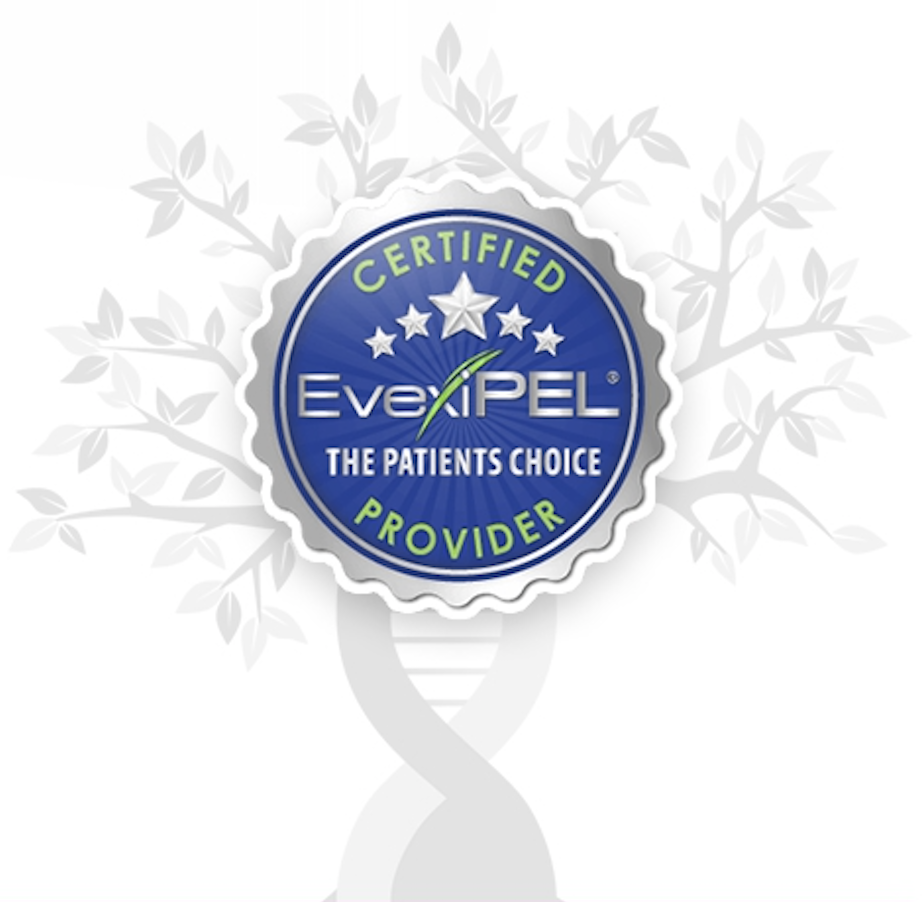Acoustic Wave Therapy
A safe, natural, treatment for ED, BPH, pain relief, and cellulite
Acoustic Wave Therapy (AWT), also known as low-intensity extracorporeal shock wave therapy, uses sound vibrational waves to stimulate tissue and promote healing. AWT may be used to treat sexual dysfunction in men, including erectile dysfunction (ED), Peyronie’s disease, and benign prostatic hypertrophy (BPH). It also has been shown to benefit patients seeking relief from chronic pain conditions and to reduce the appearance of cellulite.
Unlike medications (prescription or OTC) that provide a temporary fix for ED and BPH, mask pain, or come with unpleasant and potentially dangerous side effects, Acoustic Wave Therapy is a painless, non-invasive (no surgery, no needles) procedure that helps repair damaged tissue—safely. A key benefit of Acoustic Wave Therapy is its ability to promote the creation of new blood vessels, which helps increase blood flow and boost oxygen supply in the tissues. AWT sound waves also target plaque build-up to widen arteries and restore circulation while providing other benefits.

How does Acoustic Wave Therapy work?
During the in-office procedure, which usually lasts 15-30 minutes, the practitioner uses the Acoustic Wave Therapy medical device to apply varying degrees of frequency, energy, and pressure to the area of concern, sending pressure waves into the skin tissue to improve blood flow, boost oxygen supply, reduce plaque build-up, and promote healing.
Patients typically undergo a series of treatments to achieve desired results, which varies based on type and severity of the condition. Most patients experience little to no pain during Acoustic Wave Therapy.
What are the side effects of Acoustic Wave Therapy?
While side effects are rare, some patients may experience temporary bruising, numbness, tingling, swelling, or pain. Over-the-counter pain medication can be used to address swelling and soreness. Side effects typically subside after 1 to 2 days.
How long do the results of Acoustic Wave Therapy last?
After the initial series of treatments, results can last for months and even years but results vary from patient to patient. Some people may require follow-up treatments to continue experiencing the benefits of Acoustic Wave Therapy. Your practitioner can explain what you might expect for your unique situation
Why choose low-intensity shock wave therapy to treat erectile dysfunction?
According to the Urology Care Foundation, as many as 30 million men struggle with erectile dysfunction or ED. The common definition of ED is difficulty getting and maintaining an erection sufficient to have sexual intercourse. ED can occur for a number of reasons, including compromised blood flow or nerve damage to the penis, stress or emotional issues, or due to a serious or chronic illness. Risk factors for ED include:
- Over 50 years of age
- High blood pressure
- Cardiovascular disease
- High cholesterol
- High blood sugar (diabetes)
- Drug and alcohol use
- Being overweight
- Lack of exercise
- Mental health issues
It’s critical to determine the root cause of ED because that will direct the course of treatment.
For the many men who experience ED due to poor blood and oxygen flow in the penis, shock wave therapy helps repair dysfunctional blood vessels by removing plaque in the arteries, and it promotes new blood vessel growth by improving oxygen and blood flow. In other words, Acoustic Wave Therapy promotes healing, and for many men, provides a long-term solution to ED.
Numerous studies support the benefits and lack of downsides of Acoustic Wave Therapy. For example, a 2019 study revealed that low-intensity extracorporeal shock wave therapy for ED was safe, effective and long-lasting. Men in this study reported no pain or side effects during treatment or follow up.

A different study in 2020 evaluated patients who previously failed to respond to oral PDE5 inhibitors (Viagra, Cialias, etc.) for ED. Eighteen months following low-intensity shockwave therapy treatments, 63.5% of the men were able to achieve an erection sufficient for penetration. This study also revealed the most promising results for men with moderate ED, who were ages 45 or less and who suffered from ED 2 years or less. Again, no side effects were reported.
Compare those outcomes to PDE5 inhibitor prescription drugs, like Viagra (sildenafil), Cialis (tadalafil), Levitra (vardenafil) and Stendra (avanfil) and unfortunately, you will note there are several downsides to taking prescription medications for ED.
PDE5 inhibitors only provide temporary results, you have to plan ahead to use them, and some patients experience side effects, like vision changes, nausea, headache, pain in the back or limbs, muscle aches and rash, among others. In addition, these meds don’t work for all men with ED, and priapism (an erection lasting longer than 4 hours), is an risk that may occur when taking ED medications.
How does Acoustic Wave Therapy help address Benign Prostatic Hypertrophy (BPH)?
Benign prostatic hypertrophy (BPH), also known as enlarged prostate, is a condition that commonly occurs in men as they get older. BPH may also occur due to hormone imbalance. According to research published in the Journal of Urology, the prevalence of BPH in the male population is only 8% for men in their 40s but increases to 50% for men ages 51-60.
While BPH is non-cancerous (benign), some men do experience troubling symptoms due to an enlarged prostate. The urethra, the tube that transports urine out of the bladder through the penis, runs right through the center of the prostate, a small gland located directly below the bladder. As the prostate grows larger it can put pressure on the urethra and interfere with urine flow.

Common symptoms of an enlarged prostate or BPH include:
- Need to urinate more frequently or urgently
- More frequent trips to the bathroom at night (nocturia).
- Trouble initiating urination
- Urine stream flows weakly, stops and starts, or dribbles
- Difficulty emptying bladder completely
Though less common, benign prostatic hypertrophy can also cause urinary tract infections, blood in the urine, the inability to urinate, and in rare cases, bladder stones and kidney failure.
In recent years, typical treatments for BPH included medication to manage or slow prostate growth, as well as surgery when symptoms become more intolerable. While medications for BPH may help shrink the prostate (5 alpha-reductase inhibitors) or relax muscles in the prostate to help ease urine flow (alpha blockers), both classes of drugs do come with unwelcome side effects. One study revealed that up to 15.8% of men using the 5 alpha-reductase inhibitors finasteride and dutasteride experienced ED and decreased libido. According to the Cleveland Clinic, side effects of alpha blockers for BPH may include low blood pressure, sexual dysfunction and priapism (erection lasting longer than 4 hours) among others.
On the other hand, research has shown that extracorporeal shock wave therapy for BPH may be a good option—safe, effective, non-invasive—especially for symptomatic men who are not candidates for surgery and haven’t found relief with other forms of treatment. Statistically significant results were reported, including improved prostate symptoms, quality of life and erectile function, which were sustained at 3 months post-treatment. At 8 weeks, peak urinary flow and post-void residual improved 63% and 70% respectively. The only side effect reported was occasional pain or discomfort in the perineum, which typically subsided within 3 days.
How does Acoustic Wave Therapy help with pain relief?
If you suffer from chronic pain in your joints and muscles, heightened levels of the neurotransmitter Substance P—which is responsible for notifying the central nervous system when it perceives pan—may be to blame. AWT sound waves reduce the concentration of Substance P in the body, which may help reduce pain and inflammation. No pills required!
Research also supports the use of extracorporeal shock wave therapy for the treatment of chronic pain in some patients, with the number of treatments varying from patient to patient. The study found shock wave therapy was beneficial for patients with a variety of chronic pain complaints, including:

• Cervical syndromes (pain in the cervical spine and surrounding tissues)
• Lower or general back pain
• Plantar fasciitis
• Achillodynia (pain in the Achilles tendon)
• Metatarsalgia (foot pain)
• Humeral epicondylitis (tennis elbow)
Another study revealed that extracorporeal shock wave therapy may benefit patients suffering from carpal tunnel syndrome. The study showed that following therapy, the benefits in both pain relief and function persisted 3 months or more after the end of treatment for patients with mild to moderate carpal tunnel syndrome.
How does Acoustic Wave Therapy help address cellulite?
Low-intensity shock wave therapy was initially developed to treat chronic pain but some patients experienced an added benefit. The treatment reduced the appearance of cellulite.
During the Acoustic Wave Therapy procedure, a series of acoustic pulses transmit sound waves into the lower layers of skin to help ease up connective tissue fibers and support collagen production. Over time and a series of treatments, patients have been shown to experience firmer skin and smoothing of cellulite dimples in the treatment area.
Research supports the use of Acoustic Wave Therapy for treating cellulite on the gluteus and back of the thighs, with patients showing improvements from baseline up to 12 weeks post-treatment. Benefits included reduction in cellulite severity, hip circumference and thickness of subcutaneous fat tissue, as well as improved quality of life. Ninety percent of patients said they would have the treatment again, while 89% were satisfied with post-treatment results. In addition, no serious side effects were reported.
